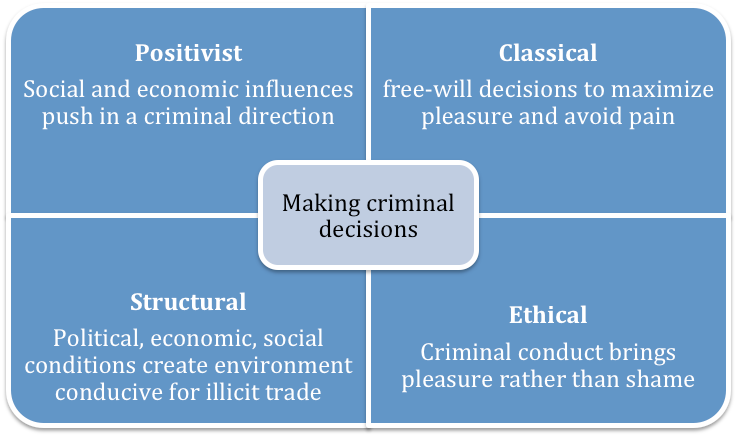- Positivism: Environmental Influences
- Classical: Pain-Pleasure Decisions
- Structural Factors and Organized Crime
- Ethical Perspective: Moral Failure in Decision-Making
- Perspectives on Crime Causes and Facilitating Factors
- Summary
- References
Published in May 2018
Regional Perspectives: Pacific Islands Region - added in November 2019
Regional Perspectives: Eastern and Southern Africa - added in April 2020
This module is a resource for lecturers
Perspectives on crime causes and facilitating factors
Any one explanation of the causes and facilitating factors of organized crime considered in a vacuum is hardly exhaustive. Nonetheless, a combination of the factors they consider can provide a very useful and exhaustive picture of these elements. This conclusion is supported by a number of research and interview-based studies on the topic.
|
Causes and facilitating factors of women and girls' participation in organized criminal groups: the example of Cape Town Based on interviews with more than 30 female gang members in Cape Town, South Africa, a study identified factors that facilitated gang membership amongst these females, ranging from those in their teens to the middle-aged. It is important to note that the findings of this study are not necessarily representative of wider female involvement in organized crime. However, it does help to understand and highlight the experiences of women involved in the Cape Town gang milieu (Shaw and Skywalker, 2017). The interviews revealed several themes that may, in part, be understood as causes or facilitative factors of joining the gangs:
|
Figure 6.2 illustrates how criminal conduct can emanate from different kinds of causal influences as explained by the ethical, classical, positivist and structural approaches. It can be seen how these different kinds of influences can be present for different individuals in different situations.
Figure 6.2. Perspectives on Crime Causes and Facilitating Factors
